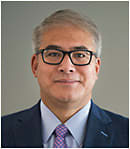“The one who falls and gets up is stronger than the one who never tried. Do not fear failure but rather fear not trying.”
- Roy T. Bennett
When I was in training, there was only one way to treat small- to medium-sized choroidal melanoma — radiation. Later, for some medium tumors, surgeons tried to save the eye by surgically removing only the tumor. For small tumors, laser photocoagulation and transpupillary thermotherapy had some success. Despite these therapies, many tumor specialists still consider watchful waiting a reasonable “treatment” option.
In systemic cancers, the pharmaceutical industry has spent billions of dollars developing new therapies, but for unclear reasons they have largely shied away from ocular tumors, especially the smaller and nonmetastatic ones. That is now changing. Belzupacap sarotalocan (Aura Biosciences) is entering worldwide phase 3 pivotal testing for smaller choroidal malignant melanoma (CMM) as well as indeterminate lesions than have demonstrated growth. The technique being used by Aura is fascinating and ingenious. The drug specifically targets tumor cells and is delivered via a suprachoroidal injection to bathe the tumor with the drug. Once the photosensitized drug is bound to the tumor, it is activated by infrared light to further limit off-target effects. The photodynamic effect produces reactive oxygen species leading to targeted tumor cell death; very elegant.
Beyond small tumors, in this issue Basil Williams, MD, and colleagues discuss the various pharmaceutical modalities being tested in CMM, in particular those to treat metastatic disease. For the many retina specialists who do not treat these retinal diseases, we hope you find this paper especially interesting.
Also in this issue, my colleague Arun Singh, MD, and colleagues explore new modalities to treat retinoblastoma. The treatment armamentarium has dramatically expanded with both intra-arterial and intravitreal chemotherapy. Like in ocular melanoma, clinical trials in retinoblastoma are ongoing. It is unclear what has changed in the ocular oncology field to see so many clinical trials in these common malignancies, but it is welcome. I only hope that the development will continue, even if some of these studies fail.
As we reflect on trials for drugs to treat cancers that some may previously have considered untreatable, let’s revisit the quote above, which is from the book “The Light in the Heart.” The author Roy T. Bennett encourages his readers to persevere through adversity and to view failures as opportunities to learn and grow. Overall, the book is a great resource for anyone seeking inspiration and guidance on how to live a more fulfilling life. Likewise, even if clinical trials in ocular oncology fail, they make the specialty stronger. RP









